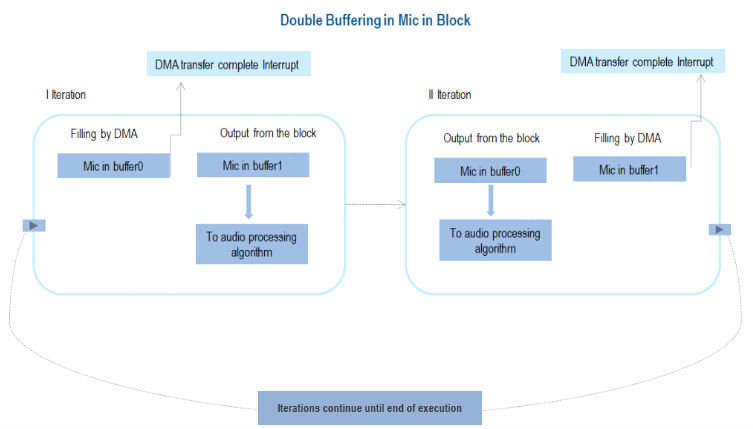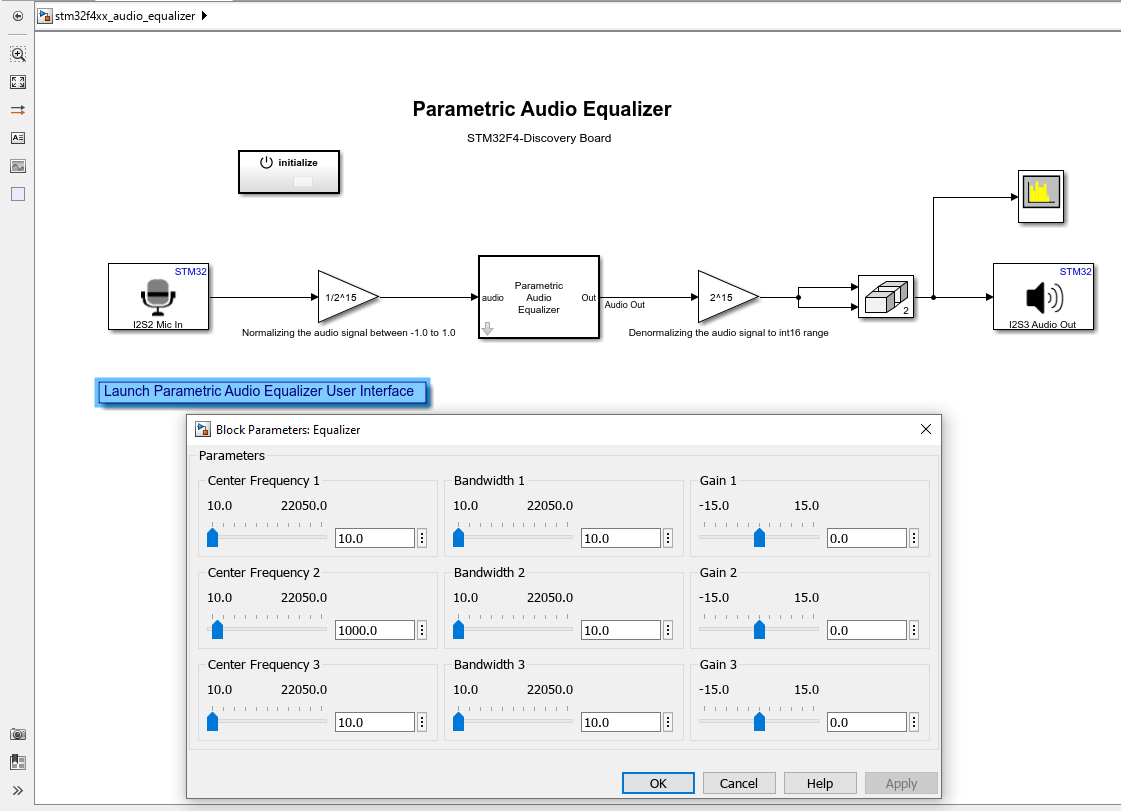I2S Mic In
Read audio sample from MEMS microphone available on the STM32F4xx based board
Since R2023a
Add-On Required: This feature requires the Embedded Coder Support Package for STMicroelectronics STM32 Processors add-on.
Libraries:
Embedded Coder Support Package for STMicroelectronics STM32 Processors /
STM32F2xx Based Boards
Embedded Coder Support Package for STMicroelectronics STM32 Processors /
STM32F3xx Based Boards
Embedded Coder Support Package for STMicroelectronics STM32 Processors /
STM32F4xx Based Boards
Embedded Coder Support Package for STMicroelectronics STM32 Processors /
STM32F7xx Based Boards
Embedded Coder Support Package for STMicroelectronics STM32 Processors /
STM32G4xx Based Boards
Description
The I2S Mic In block reads the audio samples collected from the MEMS microphone (MP45DT02, ST MEMS audio sensor, omnidirectional digital microphone), available on STM32F4xx based board. The MEMS microphone produces a Pulse Density Modulated (PDM) signal.
The block outputs int16 or int32 Pulse Code
Modulated audio frame with the size specified in Frame size (samples)
field from the block mask.
The block sample rate is calculated as: Sample frequency/ Frame size.
For example, the Mic in block sample time with 48 kHz sampling frequency and 96 samples frame size is equal to 2 ms (96/48000). The minimum allowed sampling rate for the Mic in block is 1ms.
Note
As the Mic In block always outputs 1ms of int16 PCM audio frame data, the values in Frame Size and Sample Time are calculated based on the Sample Rate that you select. The values in these parameters are for display purposes only. You cannot edit these values.
The PDM filter option in STM32CubeMX project is available only for STM32F4xx and STM32F7xx based boards.
PDM Processing
Pulse Density Modulation (PDM) uses the density of a pulse to represent a signal. The relative density of the pulses in PDM corresponds to the analog signal amplitude. In PDM bit stream, ‘1’ corresponds to a pulse of positive polarity and ‘0’ corresponds to a pulse of negative polarity. PDM uses a single bit to convey the audio.
Some of the advantages of PDM processing are:
Simple in concept and execution
Low cost audio transmission in digital form
Efficient systems with good design
Low noise and less signal interference
Read Audio Data Using Double Buffering
The Mic In block uses a double buffering to read the audio data from the MEMS microphone.
With double buffering, one buffer is used by the DMA to read audio PDM signal from the MEMS microphone while the other buffer is used to send audio frames to the audio processing algorithm. This helps to prevent overwriting of the buffer while being used by the audio algorithm.
The following describes the double buffering mechanism in the Mic In block.
In the first iteration, when the ‘Mic in buffer1’ sends the data for audio processing, the DMA fills ‘Mic in buffer0’.
In the first iteration, the ‘Mic in buffer1’ does not contain the audio samples. Therefore, the audio samples from the Mic In block are delayed by one audio frame.
After the DMA completes filling Mic in buffer0, an interrupt is triggered.
In the second iteration, when the ‘Mic in buffer0’ sends the data for audio processing and the DMA fills ‘Mic in buffer1’.

Examples
Ports
Output
Parameters
Extended Capabilities
Version History
Introduced in R2023a



